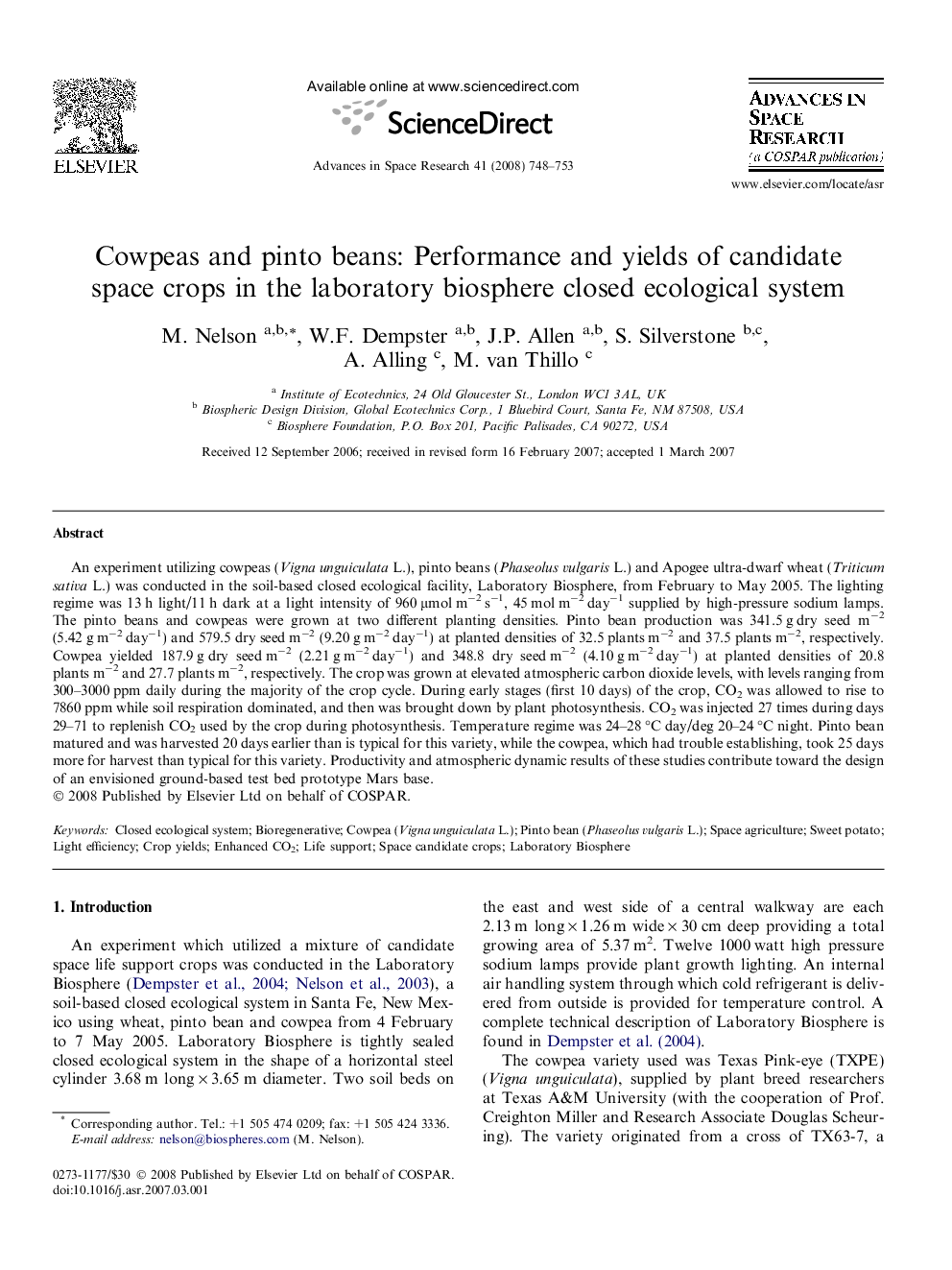| Article ID | Journal | Published Year | Pages | File Type |
|---|---|---|---|---|
| 1768521 | Advances in Space Research | 2008 | 6 Pages |
An experiment utilizing cowpeas (Vigna unguiculata L.), pinto beans (Phaseolus vulgaris L.) and Apogee ultra-dwarf wheat (Triticum sativa L.) was conducted in the soil-based closed ecological facility, Laboratory Biosphere, from February to May 2005. The lighting regime was 13 h light/11 h dark at a light intensity of 960 μmol m−2 s−1, 45 mol m−2 day−1 supplied by high-pressure sodium lamps. The pinto beans and cowpeas were grown at two different planting densities. Pinto bean production was 341.5 g dry seed m−2 (5.42 g m−2 day−1) and 579.5 dry seed m−2 (9.20 g m−2 day−1) at planted densities of 32.5 plants m−2 and 37.5 plants m−2, respectively. Cowpea yielded 187.9 g dry seed m−2 (2.21 g m−2 day−1) and 348.8 dry seed m−2 (4.10 g m−2 day−1) at planted densities of 20.8 plants m−2 and 27.7 plants m−2, respectively. The crop was grown at elevated atmospheric carbon dioxide levels, with levels ranging from 300–3000 ppm daily during the majority of the crop cycle. During early stages (first 10 days) of the crop, CO2 was allowed to rise to 7860 ppm while soil respiration dominated, and then was brought down by plant photosynthesis. CO2 was injected 27 times during days 29–71 to replenish CO2 used by the crop during photosynthesis. Temperature regime was 24–28 °C day/deg 20–24 °C night. Pinto bean matured and was harvested 20 days earlier than is typical for this variety, while the cowpea, which had trouble establishing, took 25 days more for harvest than typical for this variety. Productivity and atmospheric dynamic results of these studies contribute toward the design of an envisioned ground-based test bed prototype Mars base.
